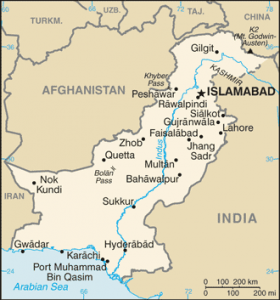Pakistani media report the fifth death due to the brain-eating amoeba, Naegleria fowleri in the past month. In 2014, some 14 people died due to contracting the lethal parasite in the country.

Naegleria fowleri (commonly referred to as the “brain-eating amoeba”), is a microscopic amoeba which is a single-celled living organism. It can cause a rare and devastating infection of the brain called primary amebic meningoencephalitis (PAM). The amoeba is commonly found in warm freshwater such as lakes, rivers, ponds and canals.
Infections can happen when contaminated water enters the body through the nose. Once the amoeba enters the nose, it travels to the brain where it causes PAM (which destroys brain tissue) and is usually fatal. Infections usually occur when it is hot for prolonged periods of time, which results in higher water temperatures and lower water levels.
Naegleria fowleri infections are rare. Most infections occur from exposure to contaminated recreational water. Cases due to the use of neti pots and the practice of ablution have been documented. You cannot be infected with Naegleria fowleri by drinking contaminated water and the amoeba is not found in salt water.
Initial symptoms of PAM usually start within 1 to 7 days after infection. The initial symptoms may include headache, fever, nausea, or vomiting. Other symptoms can include stiff neck, confusion, loss ofbalance, seizures, and hallucinations. After the start of symptoms, the disease progresses rapidly. For more infectious disease news and information, visit and “like” the Infectious Disease News Facebook page
Related story: Neti pots, Naegleria and you


What are the early clinical signs observed in patients infected with this amoeba? Can this be diagnosed early? And if so, is there a treatment / cure?
Hi Bianca,
This post may answer your questions http://www.theglobaldispatch.com/what-is-naegleria-fowleri-69349/
Robert